Flatbed Variety
Topic 4373 | Page 135
Dream load where it was real easy to secure. Right?
Sometimes I get something odd or unusual. Today I'm hauling a small piece of pipe that is bent 90 degrees at one end. I picked it up in East Palestine, Ohio and am delivering it to the Hydro plant in Gainesville, Georgia.
Total weight is 320 pounds!
These are some of the loads I have hauled since coming to my new company. These are some pretty neat but a few pretty high concerning loads. I was impressed with some of the places we get to go. Im going to VMI in Gibsonton, Florida to deliver Fabricated wood product. I will get a picture when I get to delivery.

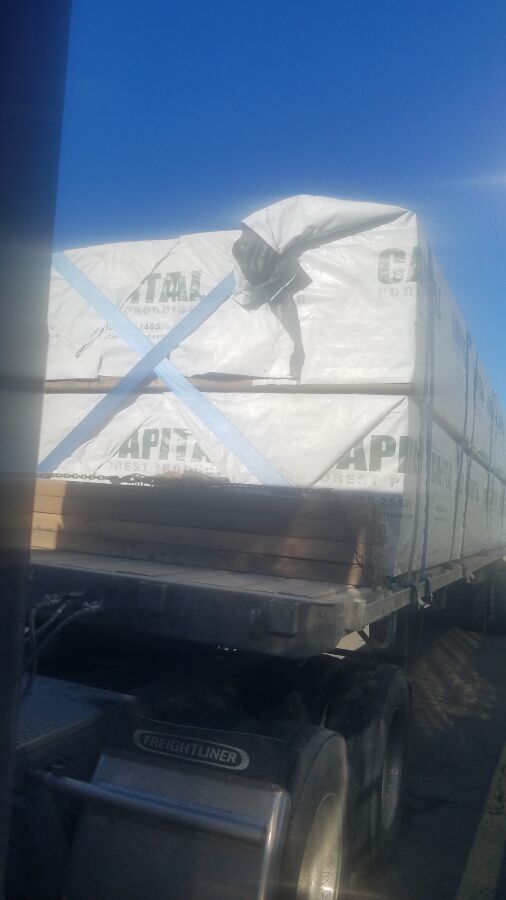
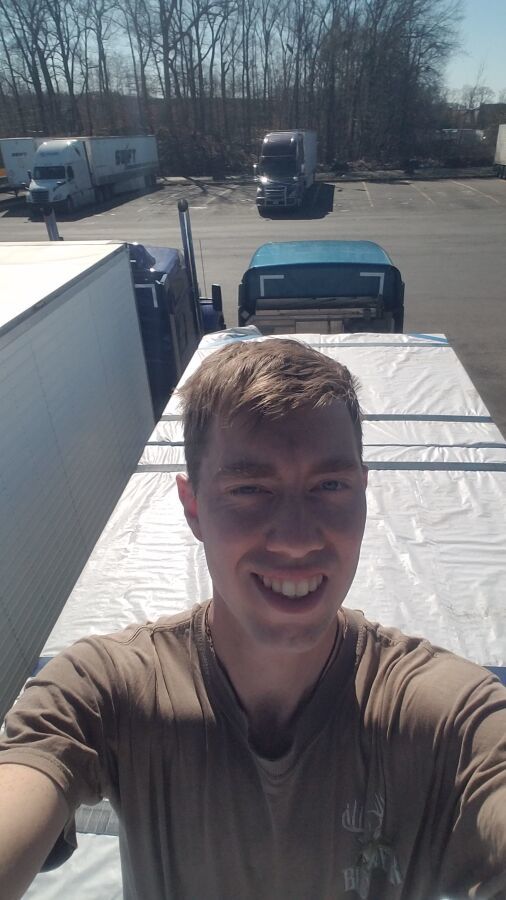
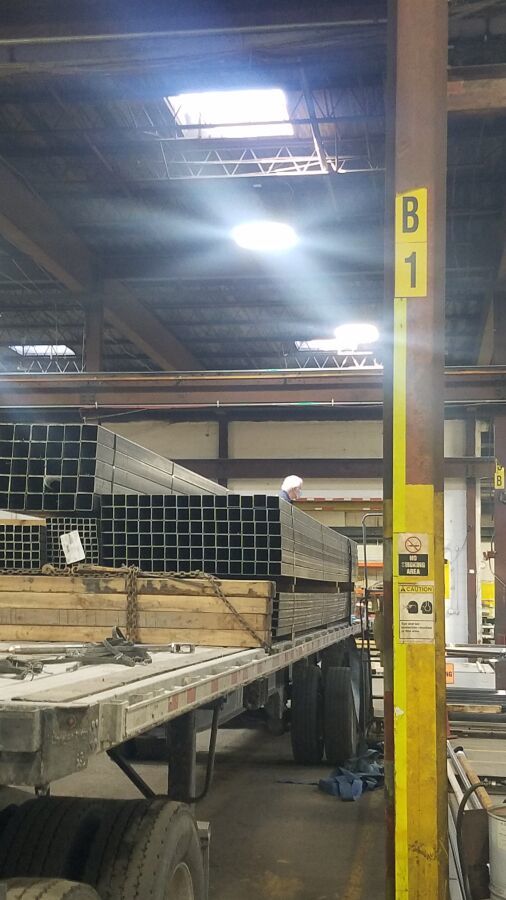

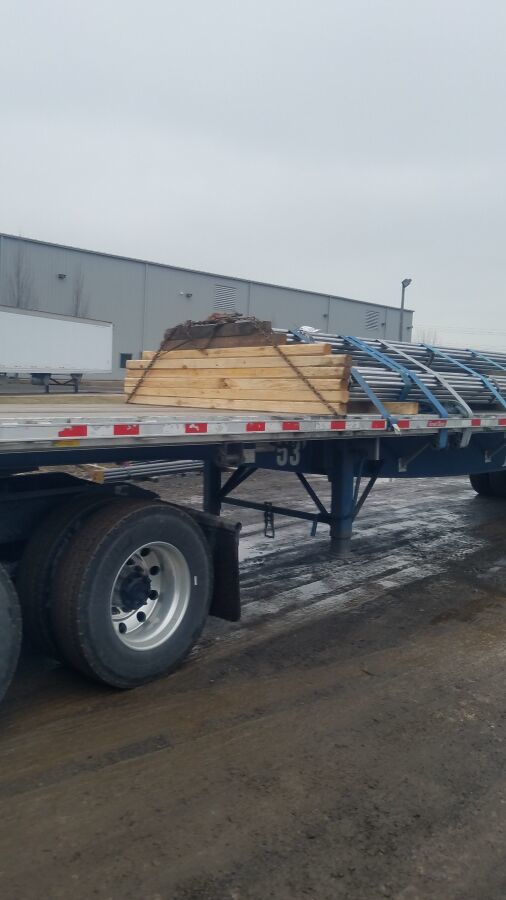
Sometimes I get something odd or unusual. Today I'm hauling a small piece of pipe that is bent 90 degrees at one end. I picked it up in East Palestine, Ohio and am delivering it to the Hydro plant in Gainesville, Georgia.
Total weight is 320 pounds!
Where've ya been, Old School ?!?!?
Not only does this thread need a huge BUMP, I just got to wondering, maybe you've been 'quiet' on here, because you're hauling more of those, and don't wanna tell usn's ?!?!? (Our nephew weighs that much, hahaha!) Reminds me of that viral pic of the flatbed hauler, with a Tonka Truck strapped to the bed, for his son. (Pic is in my gallery, btw!)



It's all in fun, good sir. Just miss ya. Tom was up to East Palestine yesterday, and I thought of this^^!
Hope all is well w/you & yours!
~ Anne ~
ps: Sure would be awesome to cross paths in Ohio, one of these days!
HOS:
Hours Of Service
HOS refers to the logbook hours of service regulations.Looks like something out of a mad max movie or a tree cutter.
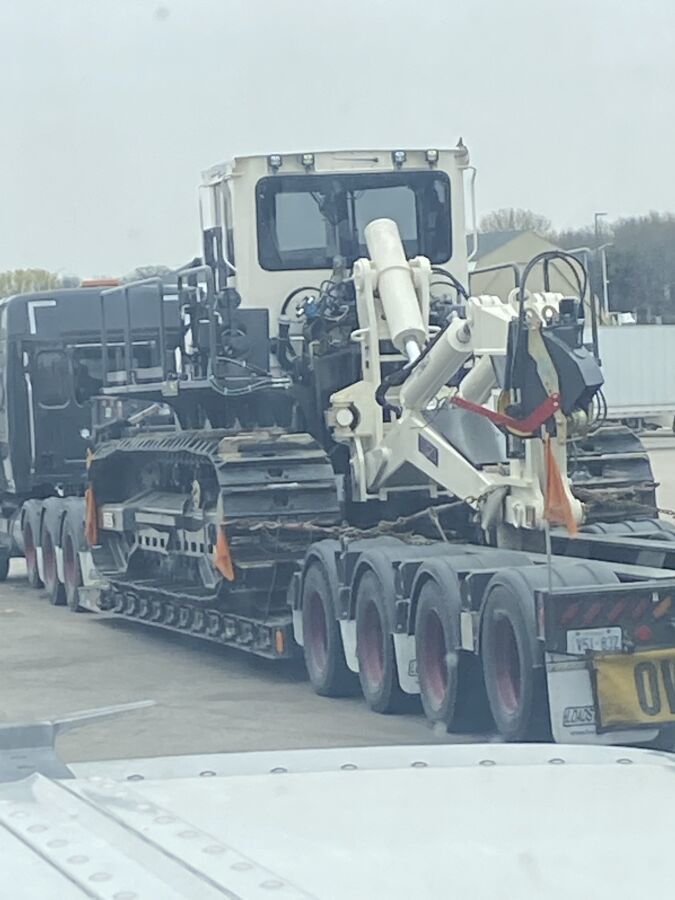
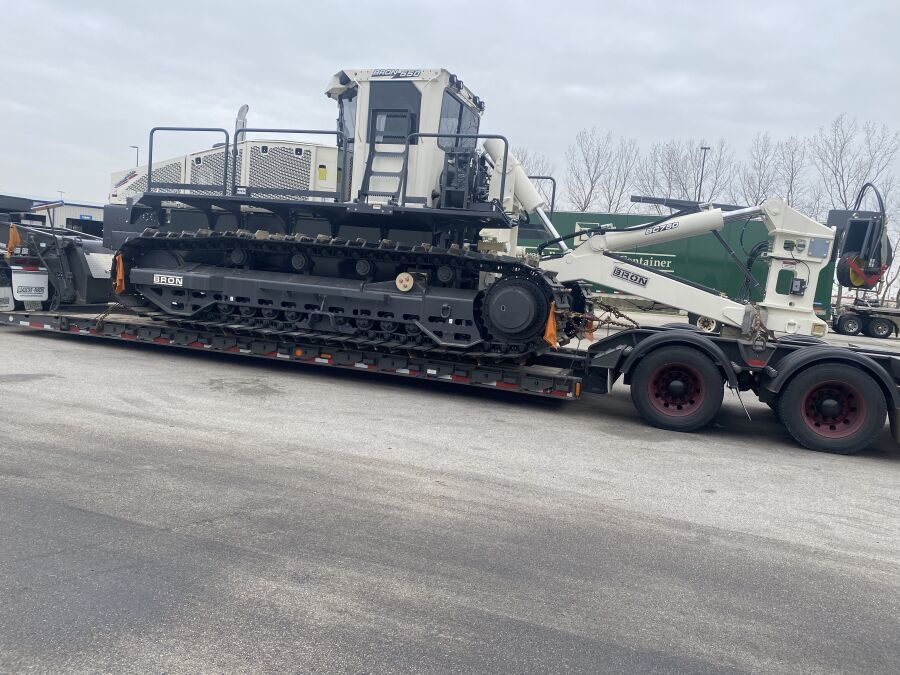
I was working in one of my orchards this morning and alfalfa hay was being loaded up on trucks at the time (hay grown on my farm by a tenant and also from neighboring farm that he also farms, we previously farmed together in partnership but I cut that back to prioritize my work in orchards).
This is a common sight around here in California and securement of these truckloads of alfalfa is probably different than what's used for anything else. Around 10 years ago or so when DOT was updating securement regulations there was a lot of controversy among hay haulers, DOT, and the highway patrol. DOT wanted a bunch of straps but there was no way hay haulers would trust those to secure their loads so they used their time-tested method of ropes with a come-along wench and also all of the required straps. DOT eventually granted an exemption. I don't remember the specific outcome but it looks like one strap per trailer is still used. There probably isn't any physical support for use of that strap, DOT probably wasn't willing to back off 100% so it may just be a token strap.
The equipment loading these bales of hay is called a squeeze. The driver gets lifted up to the top (and lowered by riding on one fork of the squeeze. These forks are maybe two inches wide or so and are very smooth yet I've never seen anybody fall off of one.
Most of this hay gets hauled to dairies. Each bale weighs from 1,100-1,400 pounds.
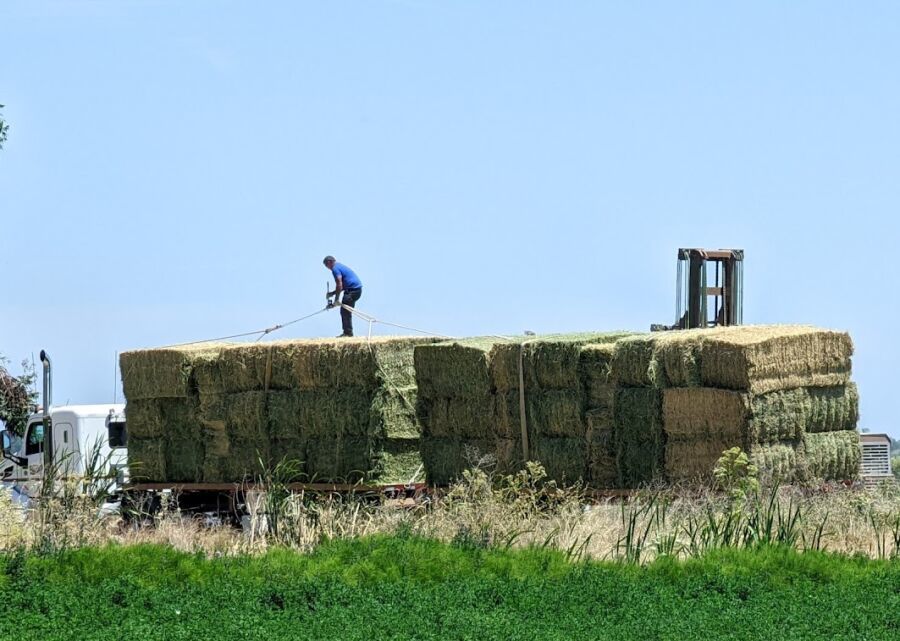
DOT:
Department Of Transportation
A department of the federal executive branch responsible for the national highways and for railroad and airline safety. It also manages Amtrak, the national railroad system, and the Coast Guard.
State and Federal DOT Officers are responsible for commercial vehicle enforcement. "The truck police" you could call them.
HOS:
Hours Of Service
HOS refers to the logbook hours of service regulations.
I was working in one of my orchards this morning and alfalfa hay was being loaded up on trucks at the time (hay grown on my farm by a tenant and also from neighboring farm that he also farms, we previously farmed together in partnership but I cut that back to prioritize my work in orchards).
This is a common sight around here in California and securement of these truckloads of alfalfa is probably different than what's used for anything else. Around 10 years ago or so when DOT was updating securement regulations there was a lot of controversy among hay haulers, DOT, and the highway patrol. DOT wanted a bunch of straps but there was no way hay haulers would trust those to secure their loads so they used their time-tested method of ropes with a come-along wench and also all of the required straps. DOT eventually granted an exemption. I don't remember the specific outcome but it looks like one strap per trailer is still used. There probably isn't any physical support for use of that strap, DOT probably wasn't willing to back off 100% so it may just be a token strap.
The equipment loading these bales of hay is called a squeeze. The driver gets lifted up to the top (and lowered by riding on one fork of the squeeze. These forks are maybe two inches wide or so and are very smooth yet I've never seen anybody fall off of one.
Most of this hay gets hauled to dairies. Each bale weighs from 1,100-1,400 pounds.
Wow, just WOW!!
Thanks for sharing, good sir. Personally, I'd LOVE to see how those big bad boys roll OUT of there... On highways? Byways?
You've got MY interest 'piqued' .. 10/10 !!
Thanks, & best always;
~ Anne ~
DOT:
Department Of Transportation
A department of the federal executive branch responsible for the national highways and for railroad and airline safety. It also manages Amtrak, the national railroad system, and the Coast Guard.
State and Federal DOT Officers are responsible for commercial vehicle enforcement. "The truck police" you could call them.
HOS:
Hours Of Service
HOS refers to the logbook hours of service regulations.
I was working in one of my orchards this morning and alfalfa hay was being loaded up on trucks at the time (hay grown on my farm by a tenant and also from neighboring farm that he also farms, we previously farmed together in partnership but I cut that back to prioritize my work in orchards).
This is a common sight around here in California and securement of these truckloads of alfalfa is probably different than what's used for anything else. Around 10 years ago or so when DOT was updating securement regulations there was a lot of controversy among hay haulers, DOT, and the highway patrol. DOT wanted a bunch of straps but there was no way hay haulers would trust those to secure their loads so they used their time-tested method of ropes with a come-along wench and also all of the required straps. DOT eventually granted an exemption. I don't remember the specific outcome but it looks like one strap per trailer is still used. There probably isn't any physical support for use of that strap, DOT probably wasn't willing to back off 100% so it may just be a token strap.
The equipment loading these bales of hay is called a squeeze. The driver gets lifted up to the top (and lowered by riding on one fork of the squeeze. These forks are maybe two inches wide or so and are very smooth yet I've never seen anybody fall off of one.
Most of this hay gets hauled to dairies. Each bale weighs from 1,100-1,400 pounds.
Wow, just WOW!!
Thanks for sharing, good sir. Personally, I'd LOVE to see how those big bad boys roll OUT of there... On highways? Byways?
You've got MY interest 'piqued' .. 10/10 !!
Thanks, & best always;
~ Anne ~
These trucks roll out on our farm roads of dirt or gravel and onto county roads or highways and down freeways, etc. Compared to many other types of cargo, hay is relatively low value (typical load is 25 tons and valued at $150-$250/ton) so not hauled very far, often less than 100 miles but sometimes further. We'll see the same truck back sometimes twice in a day. But truckloads are brought in from out of state, particularly Idaho and Nevada to supply our dairy industry. During the period when securement was being subject to public comment, one large grower about 100 miles south of here commented that he had hauled millions of bales with not one incident. Highway Patrol was in support of this securement method so DOT eventually was convinced.
One local large farmer who is relatively new to the area (started buying farmland about 15 years ago) has a very large dairy operation (9,000 cows, the last I heard) about 200 miles south of here and has his own custom trailers and trucks. His trailers have sides that can flip down and then up to secure hay hauled to his dairy and then return with manure to fertilize fields. Some of his trucks run on methane supplied by manure ponds that have coverings to capture all methane gas for truck fuel and large generators for electrical generation. One irony of state bureaucracy here is that he received financial incentives to use the methane as fuel for the generators as methane is considered a terrible form of "greenhouse gas" but then another state agency caused trouble because of the CO2 emissions from the generators. Dairy trucks powered by cow waste
DOT:
Department Of Transportation
A department of the federal executive branch responsible for the national highways and for railroad and airline safety. It also manages Amtrak, the national railroad system, and the Coast Guard.
State and Federal DOT Officers are responsible for commercial vehicle enforcement. "The truck police" you could call them.
TWIC:
Transportation Worker Identification Credential
Truck drivers who regularly pick up from or deliver to the shipping ports will often be required to carry a TWIC card.
Your TWIC is a tamper-resistant biometric card which acts as both your identification in secure areas, as well as an indicator of you having passed the necessary security clearance. TWIC cards are valid for five years. The issuance of TWIC cards is overseen by the Transportation Security Administration and the Department of Homeland Security.
HOS:
Hours Of Service
HOS refers to the logbook hours of service regulations.When driving back from a doctor appointment the other day I saw this flatbed load that I thought was a potential problem. This fuel tank is loaded off-center of the trailer, I'd guess about 10" to the left. I was looking at it from a distance but then right behind it when stopped at a signal light so I took this photo. I have no idea on the weight of a large fuel tank but it seems like a top-heavy load to begin with and when being loaded off-center I wondered if it was a risk of flipping the trailer if the truck made a moderately sharp right turn. At first I thought a chock in the back on left had slipped out of place but when close I saw there was a block between it and the tank. What are your thoughts?
You can view a higher resolution photo at https://photos.app.goo.gl/xEFigFhXLjfeHk6YA
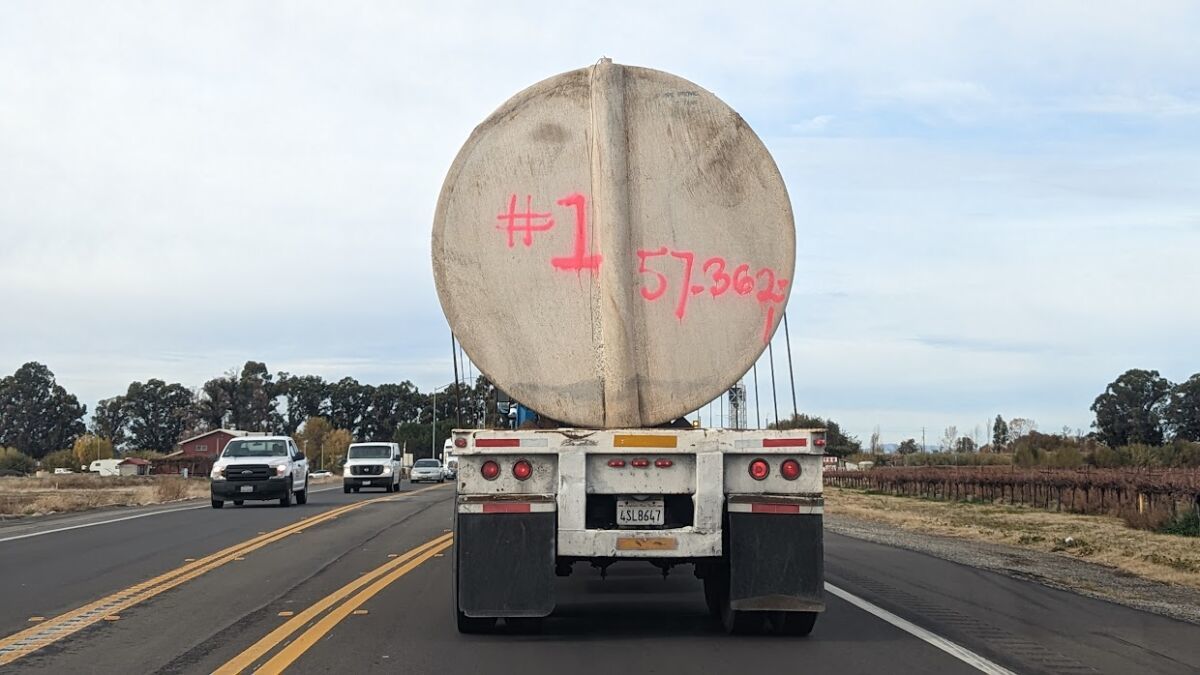
New Reply:
New! Check out our help videos for a better understanding of our forum features

















Preview:
This topic has the following tags:
Advice For New Truck Drivers Choosing A Trucking Company Flatbed Hard Lessons Learned Load Securement Photos Truck Driving Stories






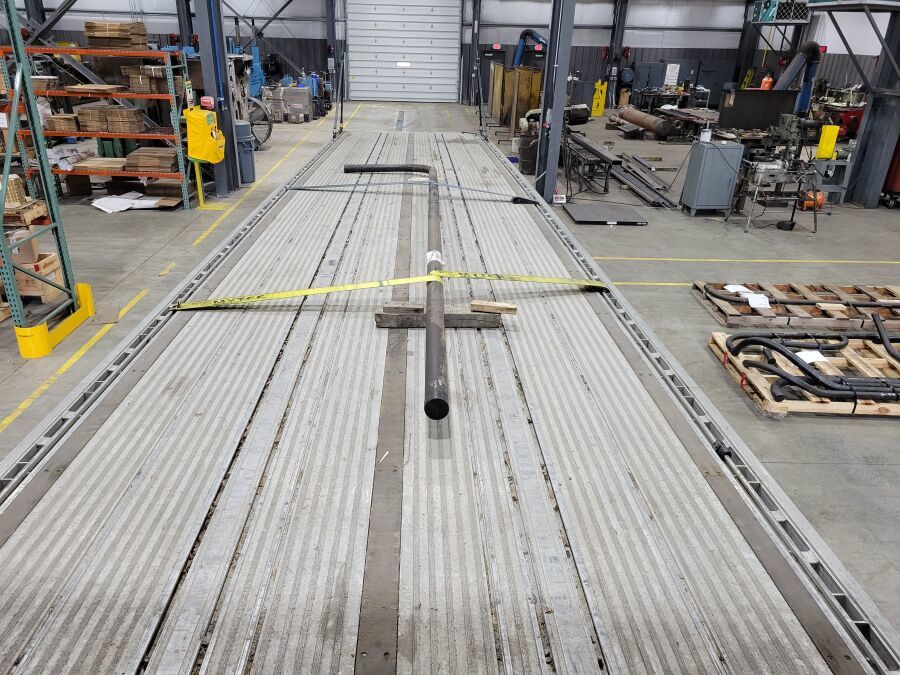
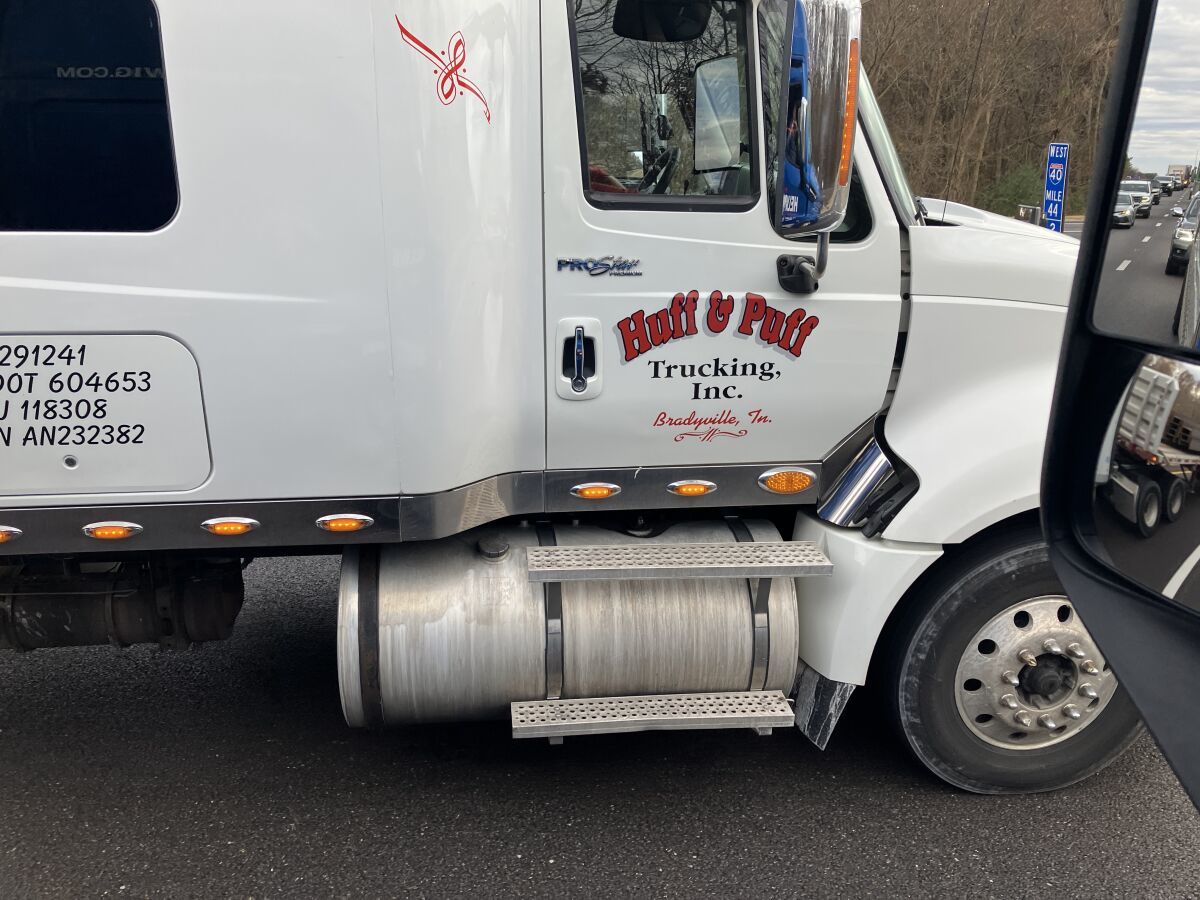

 TT On Facebook
TT On Facebook
Well I just choked on my Taquito, thanks!
ROFLMAO!!!!!
~ Anne ~